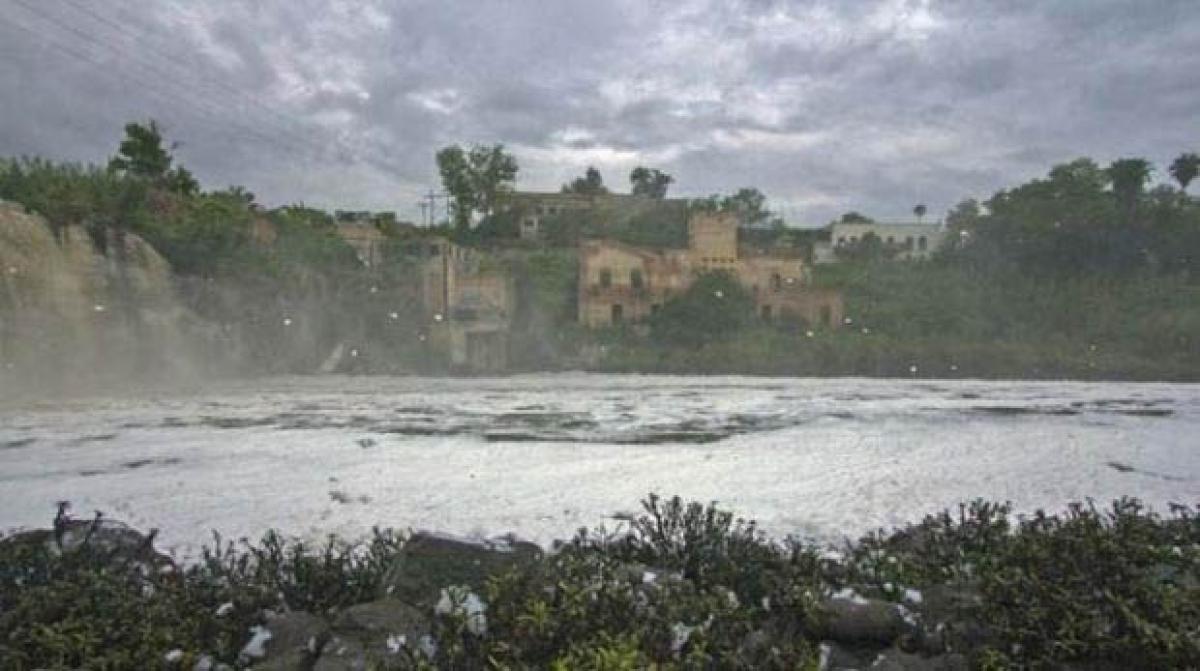Live
- COP29: CDRI announces $8 million funding for 12 projects to address climate crisis
- Anti-Telgu remarks: Actor Kasthuri Shankar moves court for bail
- Samsung AR Smart Glasses Set to Launch in 2025, Featuring Ray-Ban Meta-Like Design
- Kerala Industries Minister confident that new policy will boost plantation sector
- Madras HC plans inter-departmental monitoring committee to combat drug use in TN
- Bihar: Spotted deer dies due to heart attack in Banka district
- Mushtaq Ali T20: Shami to spearhead Bengal bowling attack, Gharami named captain
- Kharge's clarion call to oust Maharashtra's BJP-backed MahaYuti
- Why Ukraine’s Use of US Missiles Against Russia Could Lead to World War 3
- SDM slapping case: Protestors demand release of Naresh Meena
Just In

x
Highlights
Dead fish floating in fetid waters, swarms of mosquitoes and clouds of foam whipped up by pollution: Activists say Mexico\'s Santiago River, among the dirtiest in Latin America, is making people sick.
Dead fish floating in fetid waters, swarms of mosquitoes and clouds of foam whipped up by pollution: Activists say Mexico's Santiago River, among the dirtiest in Latin America, is making people sick.
The river runs from Lake Chapala in the western state of Jalisco to the Pacific Ocean, a 562-kilometer waterway that was once known for magnificent waterfalls and picturesque sceneries in a deep canyon.
But 400 factories set up shop in an industrial area along the river, dumping waste for decades, including more than 1,000 toxic substances, metals, chemicals and other pollutants, according to the governmental Mexican Water Technology Institute.
And that's not all.
The river has also had to swallow sewage from some 10 municipalities surrounding Guadalajara, Mexico's second biggest city.
The residents of two towns, Juanacatlan and El Salto, have borne the brunt of the problem.
A waterfall between the communities churns sulfate pollutants, acting like a giant washing machine that produces thick foam, parts of which often floats into the air, reaching a bridge above used by locals.
Dead child
"Any child here knows that this is anything but water," said Enrique Enciso Rivera, a member of Un Salto de Vida, a non-governmental organization founded in 2006 by local residents to combat the pollution.
In El Salto, a town of 20,000 people, the mosquito problem got so big that when people would chat outside their homes, "we couldn't talk anymore because there were so many and they'd fly into your mouth," Enciso said.
People can no longer take the stench from the river, which causes headaches, nausea and eye irritation.
In 2008, an eight-year-old boy died 19 days after falling into a canal and swallowing arsenic, Enciso said.
"Two years ago, thousands of dead fish appeared from one day to the next," said Juanacatlan Mayor Refugio Velazquez Ballina, whose office is just a few meters (yards) from the river.
"There have been a lot of cases of cancer, kidney failures and skin problems" linked to the river, he said.
Carlos Olguin, a 54-year-old man who runs a taco stand, recalled his daughter's death from cancer at the age of 28 four years ago.
Shortly before she died, a doctor at the public hospital told him that he had "many cases of people from El Salto who were getting cancer."
While locals no longer swim or fish in the river, they are still exposed to it because the ground water has been contaminated and people use wells in their homes for their kitchens and bathrooms.
Ineffective treatment plant?
Relatives of victims, civil organisations and municipal officials say the Jalisco health department is covering up the effects of the pollution.
A health department spokesman said there is no evidence linking the pollution to the illnesses in the towns, but that the agency is investigating it.
In 2013, the government opened a water treatment plant in El Salto, but the facility only cleans out part of the waste, said Sinai Guevara, coordinator of the toxics campaign for the Mexico branch of Greenpeace.
The environmentalist group tested the river in 2012 and 2013 and found neurotoxins, as well as hormone-disrupting acids.
Chemical plants, breweries, electronics factories and food-processing facilities dump the most heavy metals and cyanide in the river, according to Greenpeace.
More than two-thirds of rivers in Mexico are polluted and the Santiago is among the top three, only behind other waterways in Chile and Brazil, the group says.

Next Story
More Stories
ADVERTISEMENT
© 2024 Hyderabad Media House Limited/The Hans India. All rights reserved. Powered by hocalwire.com







